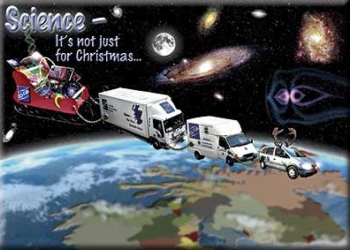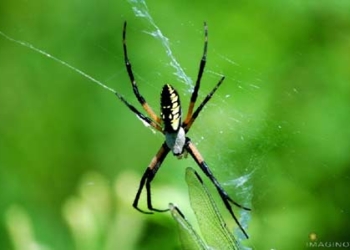The Skeleton Coast, often referred to as the “end of the Earth,” serves as a peculiar and beautiful reminder of humanity’s overwhelming insignificance in the face of nature and time.
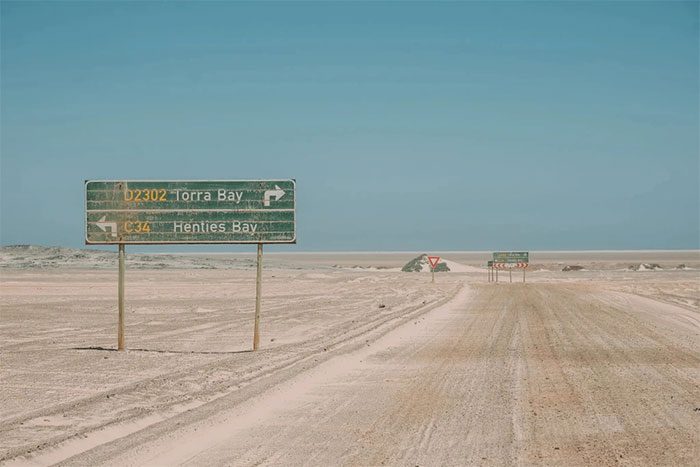
During the journey to the Skeleton Coast in Namibia, New York Times writer Genna Martin recounts driving for four hours without encountering any other living beings. No people. No cars. Just the strangeness and emptiness stretching southward to the horizon.
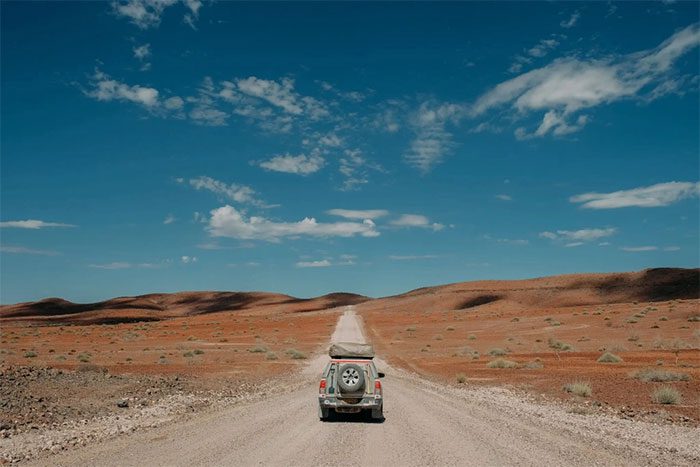
Namibia is a country in southern Africa. The pristine Skeleton Coast begins at the northern border of Namibia with Angola and extends 482 kilometers south to the town of Swakopmund—once a German colony, filled with bakeries and beer gardens along its streets.

The port town of Swakopmund was established in 1892 as a colony of the German Empire. To this day, the German language and architecture still dominate here. Two thousand members of the Herero tribe were killed in a concentration camp run by the German army during the Herero Wars in the early 1900s. Many years later, the town became a tourist destination for Namibians, primarily white visitors.
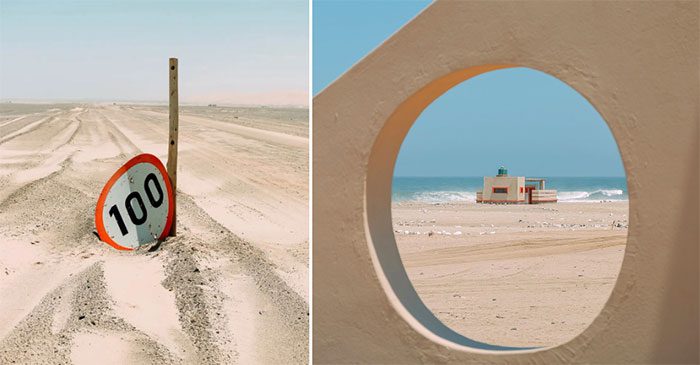
In the image, the C34 highway runs along the coast of Namibia, almost indistinguishable from the surrounding desert. To the left, the desert. To the right, the ocean. In the middle lies a road of salt and sand, tightly connecting the two. Under the gloomy sky, the three surfaces of sand, sea, and road fade into an indistinguishable gray-brown streak.
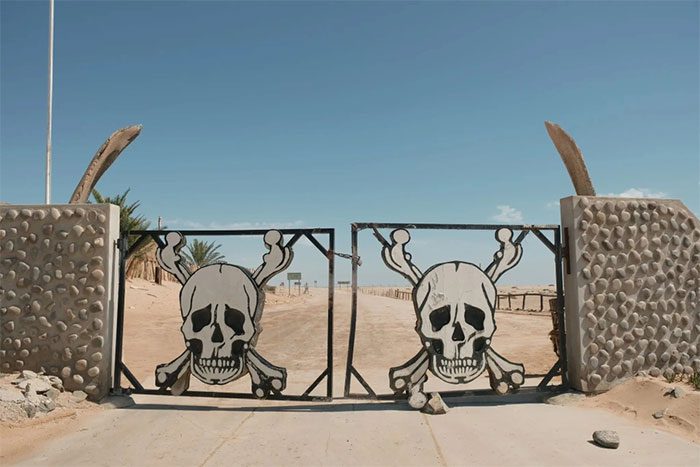
Ugab Gate, the southern entrance to the Skeleton Coast, features warning signs about the dangers and harsh conditions waiting for visitors on the other side. The harsh and arid conditions are the reason behind the name Skeleton. Upon reaching Skeleton, one can see the remains of animal skeletons and shipwrecks scattered along the coast. Many animals have tried and failed, even perishing while attempting to make this place home or a recreational spot. This land has become one of the most extreme and isolated tourist destinations on the planet.
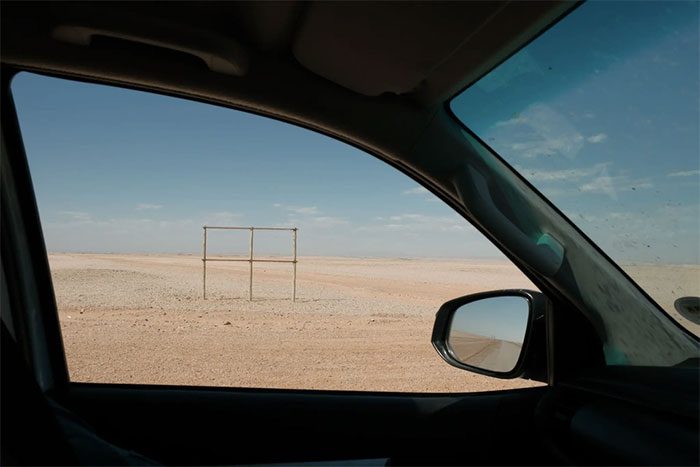
In her article, Genna Martin assesses that this area holds a mix unlike any other on Earth—between cultures, landscapes, and species—sometimes evoking images of a post-apocalyptic wasteland.
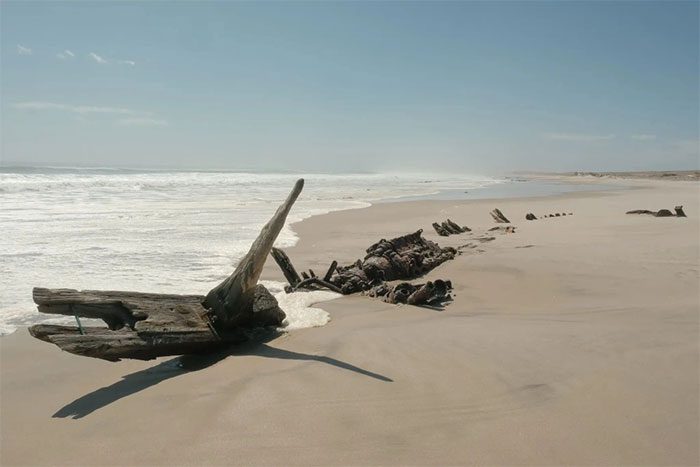
The endpoint of this arid desert is the fierce Atlantic Ocean—where the sea has claimed the lives of many sailors, ships, aircraft, and animals. The shipwrecks, rusty aircraft, and bleached animal bones are reminders of the harshness of this place. It is a harsh land, nearly devoid of life, with dangers lurking everywhere, from barren mountains to dense coastal fog. The image shows the remains of the South West Seal, a fishing vessel that ran aground in 1976.
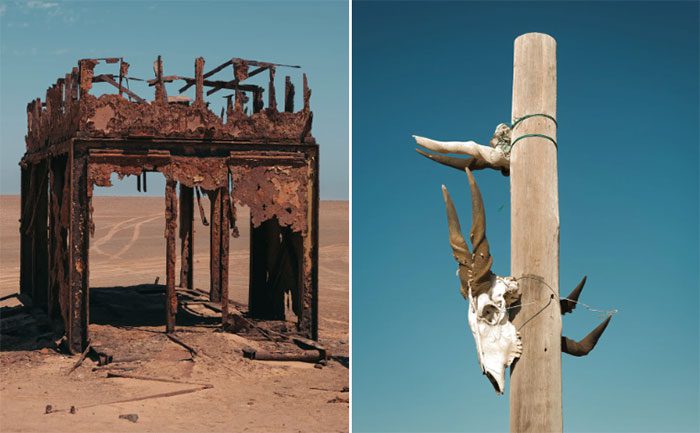
The few artificial traces here are in a state of decay: Faded road signs, an abandoned oil rig rusting away, gradually eroded by time, sand, and sea air. The image shows the remnants of an old oil rig (on the right), alongside the skull of an African gazelle and other animals fixed to wooden posts along the highway (on the left).
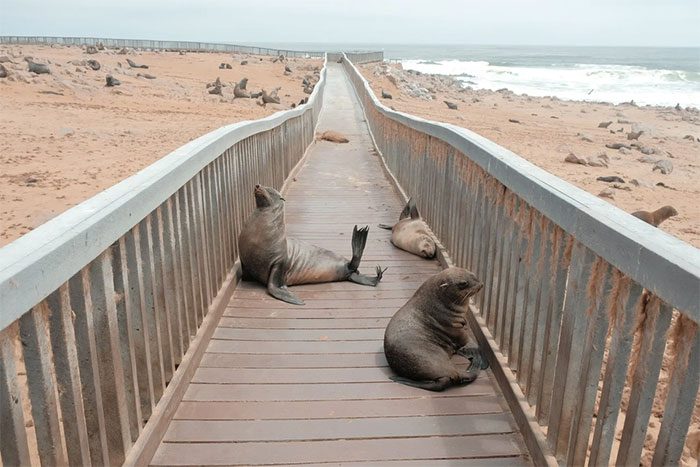
Along the way, Genna Martin crosses other strange sites such as the Cape Cross Seal Reserve, home to over 200,000 of the world’s largest fur seals.
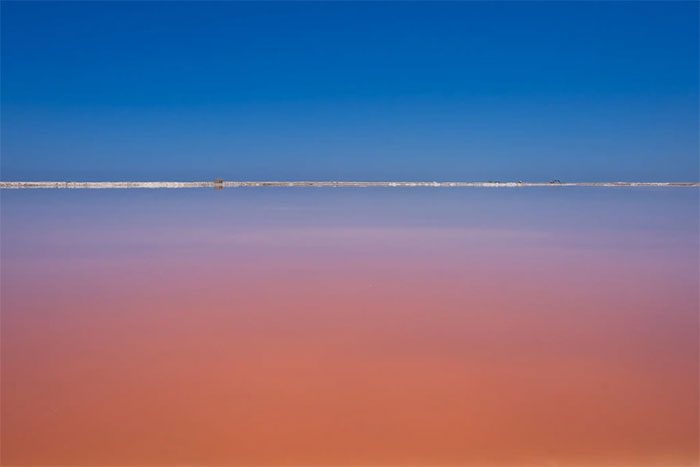
Genna Martin also passes through the salt mining area in Walvis Bay, where enormous salt pans are bright pink due to the presence of the Dunaliella salina algae, perfectly matching the flamingos lurking to hunt shrimp in the nearby wetlands.
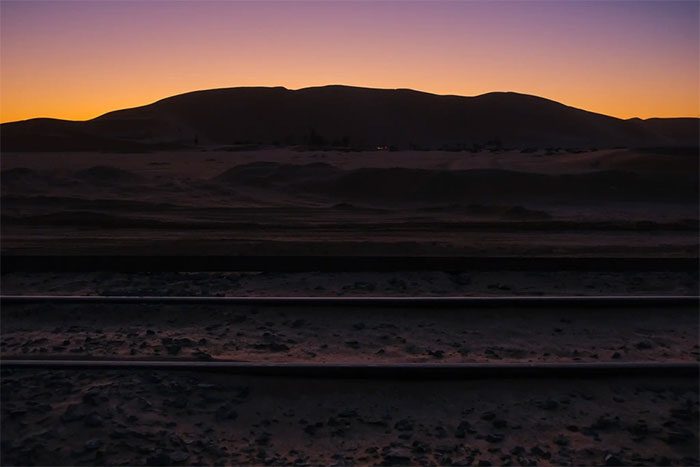
The colors of the landscape and coastline gradually change, with red sand appearing further south as one enters the Namib-Naukluft National Park, home to the oldest desert in the world: the Namib Desert. Dune 7 in the desert was captured at sunset. Measured at over 382 meters high, it is the tallest dune in Namibia.









































